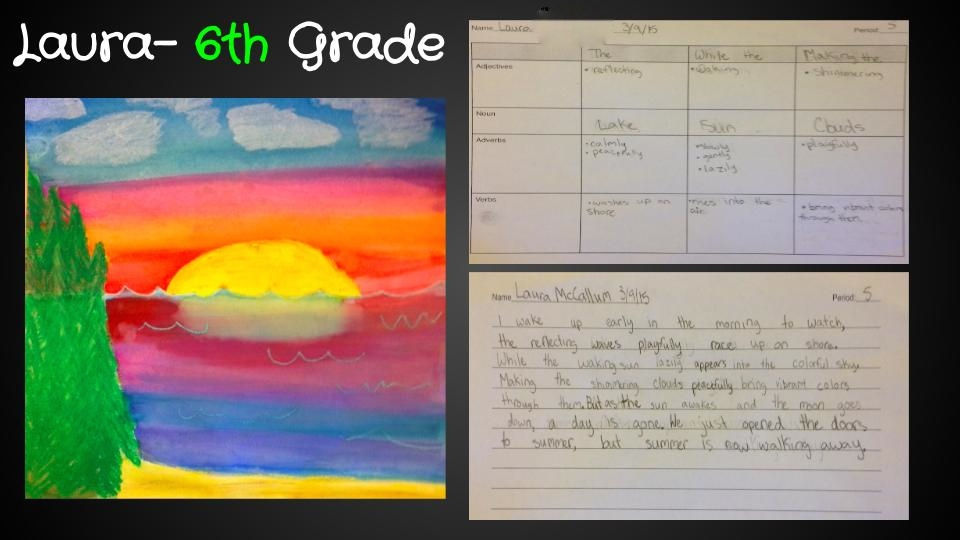Arts-based Learning at WMS
- By: Abby Jacobs
- Apr 1, 2015
- 2 min read
Introduction: Arts-based Learning
The concepts of integration and enhancement are by no means new to education. But as
education progresses new more rigorous and developed approaches to arts-based teaching and
learning emerge. At WMS this has taken form in an arts-based literacy project— uniting visual
and language arts. Through this project two WMS teachers discovered increased creativity,
student engagement, learning equity, and deepened content connections as benefits to an arts-
based pedagogy. Together they demonstrate that when student writing is driven by the creation of rich visuals, learning can be transformed in powerful ways.
The Project: Art-based Literacy
Co-Taught by: Abby Jacobs - Art Teacher, Mike Burke - 6th Grade Language Arts
Learning Goal: To paint a landscape using watercolor crayon resist in order to inspire the
creation of a paragraph that demonstrates command of descriptive language and personification.
Objective: To highlight the impact art-based literacy can have on student learning. Using a lively
alternative pathway into literacy learning for all students, where art is integrated with writing rather than simply enhancing it.
The foundation of this integrated-learning project is the “artist-writer workshop” model. The artist-writer workshop includes a literature share (or guided-reading) where students gather around a picture book and discuss the image and word relationships; showcasing how text and pictures work together to tell a story. In the best books, images and words work together to engage students in their understanding of descriptive language.
Each guided-reading is followed by an “artist workshop” which contains a teacher demonstration and student art-making. In this project, the teacher demonstrated crayon resist and discussed “space” (foreground, middle-ground, and background) and “twilight.” Students went on to use both of these techniques to create their landscapes. Their landscape prompt was to create “an imaginary place where they would like to be at twilight” as twilight was the theme in all the books read during the literature share. Once the paintings were completed, students used the finished artwork to generate ideas about their writing. Students focused on finding nouns within the painting and then sought to add verbs, and adjectives to achieve personification in order to create a “perfect paragraph” that described their landscape. Students encountered the benefits of “arts-based literacy” quickly, as the artwork helped to guide them in their writing. Students noted that, “everything they wanted to say was already worked out in their painting.”
Allie, a 6th grade student said, “ it is hard, sometimes, to think of how to start. If you do the art- ing before, you already have what you are going to write right in front of you. So it’s easier to start writing... I just followed my painting... I just wrote what was already there... I really liked this process...I would like to do it again...If you had three paragraphs, you could have paintings for the first paragraph, second, and third.”
Overall, students were actively engaged in the art-making and the writing process throughout the entire lesson. Most students seemed confident and comfortable creating their landscape and using it to guide their writing.



In the end our hope is that the art-based literacy model could be easily adapted for a core classroom, and teachers could facilitate a streamlined model of arts-integration to work with any content.

























Comments